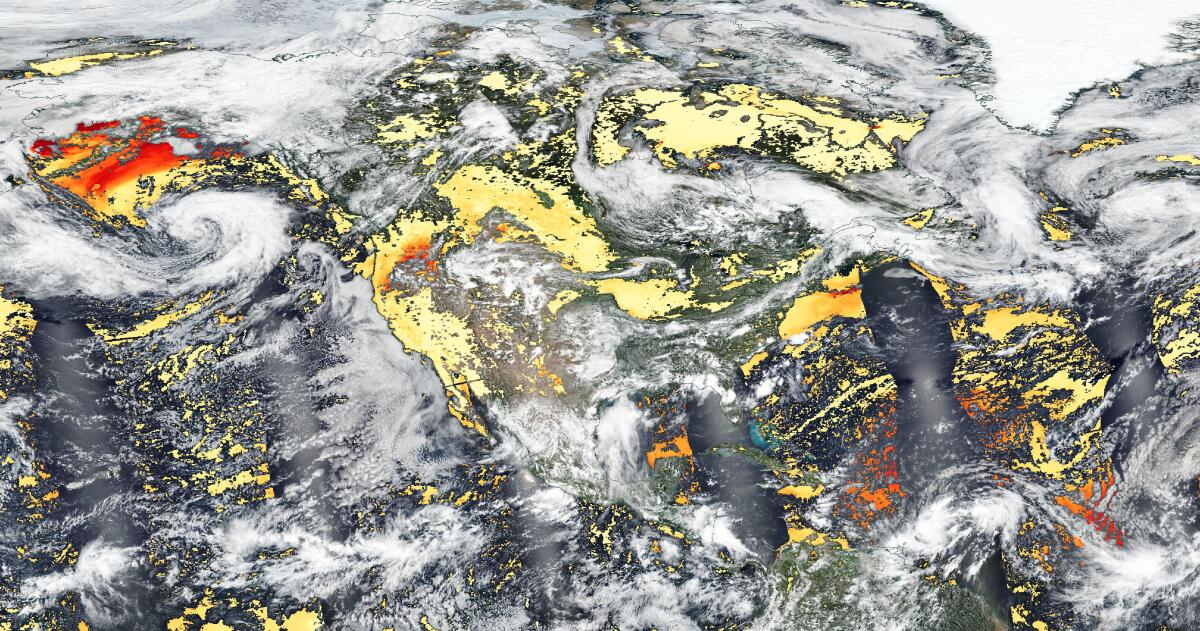Air quality: a measurement from space

What VIIRS tells us about the air we breathe
Take a deep breath. In goes a portion of the approximately 11,000 liters of air you breathe in a day. The quality of such air, measured through the Air Quality Index and often reported by your local forecaster, impacts everything from allergies to your choice of outdoor or indoor activities and more.
And, air quality can be measured from space. Sitting on a perch 500 miles above Earth, an instrument called the Visible Infrared Imaging Radiometer Suite, or VIIRS, actively monitors the air we breathe. Built by Raytheon Intelligence & Space, VIIRS flies aboard the National Oceanic and Atmospheric Administration and NASA’s collaborative Joint Polar Satellite System, or JPSS. Two satellites from the program, the Suomi-National Polar-orbiting Partnership and NOAA-20 — previously called JPSS-1 — are currently on orbit.
“People often think of VIIRS as just a weather instrument, but its value extends far beyond weather,” said Shawn Cochran, senior manager at Space & C2 Systems for RI&S. “One of the most notable things we’ve seen from VIIRS recently is changes in air quality with things like dust. The dust in one region can impact air quality hundreds of miles away.”
VIIRS contributes to air quality data through its deep blue band — 412 nm. It can measure particulates in the atmosphere by looking for aerosols.
“VIIRS is our multi-purpose instrument,” said James Gleason, JPSS senior project scientist for NASA. “We use VIIRS data to understand what’s happening on land, in the ocean and in the atmosphere. In the atmosphere, VIIRS can measure more than just clouds. It can measure aerosols, very small particles in the air, like the smoke from a fire. It can measure where the smoke is going and how the smoke is affecting air quality.”
What VIIRS is essentially measuring is air transparency. Measuring tiny aerosol particles is challenging since it’s very difficult to see anything that floats in the air.
“Because aerosols are suspended in the air, they affect signals — wavelengths of visible light — coming from the Earth, reflecting, absorbing or diverging these signals,” said Wael Ibrahim, Ph.D., principal systems engineer at RI&S. “If you have a clear day with no aerosols, the signal comes straight forward from the Earth.”
VIIRS can “see” these suspended particles by measuring aerosol optical depth or thickness. The deep blue band provides the ability to distinguish between the surface of the Earth and the aerosol itself. The measurement runs on a scale of zero to one, where less than 0.1, shown as a pale yellow color on an image, equals clear skies with maximum visibility. On the other side of the scale, shown as a reddish brown color, are hazy conditions due to smoke, sand storms or pollutants.
Depending on their size, type and location, aerosols can impact Earth in a variety of ways, like cooling or heating the Earth’s surface temperature, or helping or inhibiting cloud formation. Some aerosols, if inhaled, can be harmful to people’s health.
“Systems like VIIRS really enable us to understand what’s happening in the environment so we can be prepared,” Cochran said.
Learn more about RI&S’ Space Solutions here.